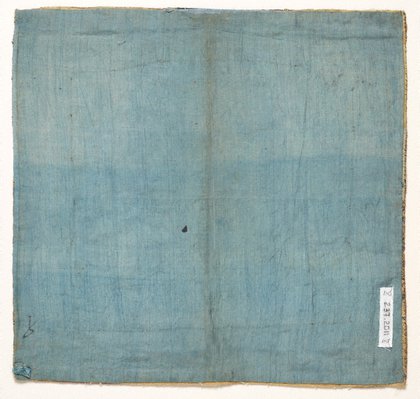-
Details
- Place where the work was made
-
China
- Period
- Qing dynasty 1644 - 1911 → China
- Date
- circa 1860
- Media category
- Textile
- Materials used
- silk, split tapestry weave (kesi)
- Dimensions
- 28.5 x 29.5 cm
- Credit
- Gift of Dr David Ling 2011. Donated through the Australian Government Cultural Gifts Program.
- Location
- Not on display
- Accession number
- 237.2011
- Copyright
- Share
-
-
About
Rank badges were insignia badges worn by court officials to signify their status in the civil or military sphere. Two badges were attached to the costume, one on the back the other on the front which was split to allow the garment to be buttoned up at the front.
The badges were first introduced during the Ming period in 1391. From the Ming (1368-1644) to the Qing dynasty (1644-1912) the styles of the badges changed dependent on the tastes of the times - not necessarily only when the court dress regulations were published in 1652 and revised by Qianlong emperor in 1759. The best indicator of the time period of a badge are background elements such as water and cloud designs, as these could indicate what was fashionable at the time.
Civil rankings were based on the passing of demanding official examinations. Civil badges consisted of nine ranks each represented by a different bird, with only a couple of changes of bird types over the two dynasties. Military examinations were based on physical feats rather than literary and the rank badges are rarer. For example, towards the overturn of the Qing, military rank badges in particular were burnt to conceal identification. Military badges consisted of animals representing rank. During the Qing rank badges were generally worn by an official, his wife or wives and unmarried sons and daughters (Garrett 37)
Kesi (‘cut silk’) badges are a rarer and more valuable textile, whose complexities lie in the weaving technique. Schuyler Cammann noted that compared to the Ming period, many of the early Qing badges were embroidered. This could be due to 2 reasons: the fall of Yangzhou in 1645 and other cities which had silk weaving industries-resulting in the high cost of silk; and that woven silk appeared to be monopolised by the imperial classes with restricted use to nobles. (Cammann p. 97).
The 3rd rank military badge depicts a leopard in kesi weave. The leopard faces the sun (emperor) and is surrounded by a number of auspicious elements standing on a hill surrounded by waves and cloud elements.
LITERATURE:
Schuyler Cammann, ‘The development of the Mandarin square’, 'Harvard Journal of Asiatic Studies', vol.8, no.2 (Aug. 1944), pp. 71-130
Valery M. Garrett, 'Mandarin Squares', Oxford University Press, 1990.
Valery Garrett, 'Chinese dress from the Qing dynasty to the present', Tuttle Publishing, Singapore, 2007Asian Art Department, AGNSW, June 2011
-
Places
Where the work was made
China
-
Exhibition history
Shown in 2 exhibitions
One hundred flowers (2011), Art Gallery of New South Wales, Sydney, 01 Sep 2011–15 Jan 2012
Glorious, Art Gallery of New South Wales, Sydney, 27 May 2017–06 Jan 2019

